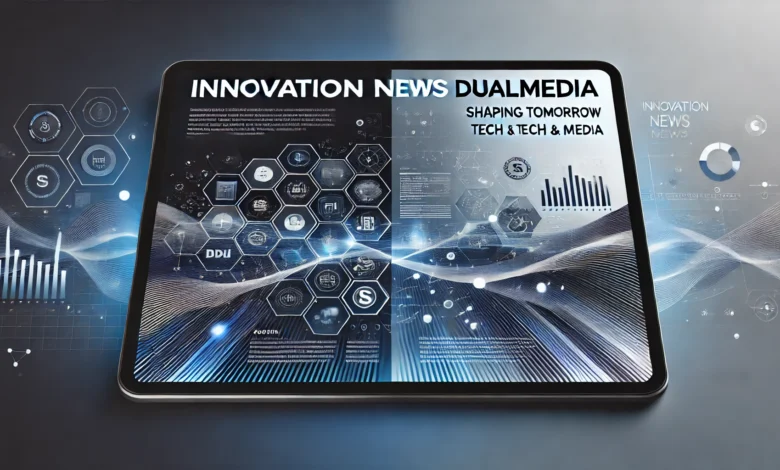Decoding the Future: The relentless march of technological progress is a spectacle best witnessed through the lens of Apple’s annual flagship unveiling. Each September, the world holds its breath as new iPhones are revealed, not just for their groundbreaking features but for the ever-climbing figures attached to them. The “Pro Max” variant, sitting at the absolute apex of Apple’s smartphone pyramid, consistently commands a premium that pushes the boundaries of what consumers are willing to pay for a pocket-sized supercomputer. As we cast our gaze further into the future, towards the horizon where the iPhone 17 Pro Max awaits its debut in the fall of 2025, the question on the minds of tech enthusiasts, investors, and everyday users alike is a complex one: What will it cost? The answer is not a simple number pulled from thin air; it is a intricate tapestry woven from threads of technological ambition, macroeconomic forces, competitive strategy, and raw material reality. To understand the potential price of the iPhone 17 Pro Max is to understand the very direction of the smartphone industry and the global economy it inhabits.
Predicting the cost of a device that is still deep within the secretive labs of Apple is an exercise in informed speculation. We lack official blueprints or component lists. Instead, we must analyze current trends, industry whispers, and the historical trajectory of Apple’s pricing model. The iPhone 16 series, yet to be released itself, will set the immediate precedent, but the 17 Pro Max is expected to be a more significant generational leap, potentially incorporating technologies that are currently in their infancy. This analysis will move beyond mere guesswork, building a framework for understanding the financial investment you might need to make for this future device. We will dissect the legacy of iPhone pricing, the revolutionary features that could inflate the bill of materials, the external economic pressures at play, and finally, provide a realistic forecast and strategic advice on how to navigate the purchase when the time comes. This is not just about preparing your wallet; it’s about preparing your expectations for the next era of mobile technology.
![Image: A sleek, conceptual render of the iPhone 17 Pro Max in a dark titanium finish, showcasing a seamless, port-less design with a vibrant, always-on display.]
Conceptual art of the potential iPhone 17 Pro Max design, hinting at a more seamless, integrated form factor.
The Historical Trajectory of iPhone Pro Max Pricing: A Legacy of Premium Costs
To project the future, one must first understand the past. The “Pro Max” lineage, beginning with the iPhone 11 Pro Max in 2019, established a new top-tier category focused on users demanding the largest screen and the best possible camera system. Its starting price of $1,099 set a new benchmark. Since then, the starting price has climbed steadily, punctuated by significant jumps coinciding with major design overhauls or the introduction of costly new materials. The iPhone 12 Pro Max maintained the $1,099 entry point but introduced 5G capabilities, a hidden cost that Apple absorbed to push the technology mainstream. The true leap came with the iPhone 14 Pro Max, which saw the starting price rise to $1,099 for the 128GB model, a structure that continued with the iPhone 15 Pro Max, though its base storage jumped to 256GB, effectively offering more value at the same price point but making the direct comparison nuanced.
This historical pattern reveals a crucial strategy: incremental annual increases, often justified by tangible upgrades in performance, display technology, or camera sensors. However, the larger jumps are reserved for what Apple deems “tick” years in its development cycle—years that introduce a new industrial design, a new material like titanium, or a fundamental shift in the device’s core functionality, such as the removal of the physical SIM tray or the move to a USB-C port. These changes involve massive retooling of manufacturing lines, new supply chain partnerships, and significant R&D investment, costs that are inevitably passed down to the consumer. The trajectory is not a straight line upwards but a stepped incline, with each step representing a consolidation of new technology and a recalibration of the market’s perception of value.
Furthermore, Apple has masterfully employed a strategy of storage-tier pricing to elevate the Average Selling Price (ASP). While the base model might see a modest increase, the cost to jump from 256GB to 512GB or 1TB is substantial, creating a wide price band for what is essentially the same hardware. For the Pro Max, this means the effective price for many power users—those who need ample space for ProRes video, high-resolution photos, and expansive app libraries—often lands hundreds of dollars above the advertised starting price. This history paints a clear picture: the baseline is mobile, and the ceiling is constantly being raised. The iPhone 17 Pro Max will not be an exception to this rule; it will be the next evolution of it, building upon a foundation where a four-figure price is not just accepted but expected for the ultimate mobile experience.
![Image: A comparative table showing the starting prices of iPhone Pro Max models from iPhone 11 Pro Max to the speculated iPhone 17 Pro Max.]
A visual history of iPhone Pro Max pricing, illustrating the steady upward trend over recent generations.
Technological Innovations: The Primary Engine of Price Inflation
The single greatest determinant of the iPhone 17 Pro Max’s final price will be the suite of technologies Apple chooses to integrate into its chassis. Rumors and industry analysis point to several potential game-changers, each carrying its own significant cost. The most talked-about innovation is the under-display Face ID system. This technology, which would hide the TrueDepth camera sensors beneath the OLED panel, eliminating the Dynamic Island or any notch entirely, represents a monumental engineering challenge. It requires the development of new, more transparent OLED materials, incredibly precise micro-lens arrays to channel light to the sensors, and complex software algorithms to compensate for any optical distortion introduced by the display layers above. This R&D cost, coupled with the initially low yield rates of such cutting-edge components, will add a considerable premium to the device’s Bill of Materials (BOM).
Another major cost driver could be the advancement in display technology itself. While the Pro Max already boasts a superb Super Retina XDR display, the iPhone 17 Pro Max is a prime candidate for Apple’s first microLED panel. Touted as the successor to OLED, microLED offers superior brightness, better color accuracy, higher contrast ratios, and significantly reduced power consumption. However, the manufacturing process for microLED is notoriously difficult and expensive, especially at the pixel densities required for a smartphone screen. Adopting this technology in 2025 would position the iPhone 17 Pro Max years ahead of the competition but would undoubtedly be the most expensive component in the device, potentially adding $100-$200 to the BOM alone compared to a mature OLED.
Beyond the display, the camera system is perennially a focus of cost increases. We can expect a more sophisticated tetraprism or even a new penta-lens array with enhanced periscope zoom capabilities, perhaps reaching 10x or 12x optical zoom. The sensors will likely be larger, capturing more light and enabling even more computational photography magic. The LiDAR scanner might see an upgrade for improved AR performance and low-light focus. Each of these enhancements requires expensive, custom-designed glass elements, larger sensor dies, and more powerful image signal processors. When combined with the inevitable jump to a next-generation A-series chip built on an even more advanced (and costly) 2nm or improved 3nm process node, which itself will deliver monumental gains in AI and machine learning performance, the cumulative effect on the base cost of the iPhone 17 Pro Max is profound. These aren’t mere incremental updates; they are foundational shifts that redefine the device’s capabilities and its price tag.
External Economic and Supply Chain Factors: The Invisible Hand on Your Wallet
While Apple’s engineers design the future, the global economy dictates the reality of its cost. The price of the iPhone 17 Pro Max will not be set in a vacuum within Cupertino; it will be heavily influenced by a multitude of external pressures far beyond the control of any single corporation. One of the most persistent factors is global inflation. The cost of labor, shipping, logistics, and energy directly impacts the final manufacturing and distribution cost of every single unit. If inflationary trends continue or worsen through 2024 and into 2025, Apple will be faced with a difficult choice: absorb the higher operational costs and protect its profit margins, or pass those costs onto consumers through higher retail prices. Historically, a mix of both strategies is employed, but in a high-inflation environment, consumer price increases become almost inevitable.
Trade policies and tariffs represent another wild card. geopolitical tensions, particularly between the U.S. and China, can lead to sudden tariffs on imported goods, including electronics and their components. While Apple has been diversifying its assembly lines to countries like India and Vietnam, a significant portion of its supply chain remains deeply rooted in China. The imposition of new tariffs could instantly add tens or even hundreds of dollars to the cost of each iPhone imported into key markets like the United States. This is a direct, non-negotiable cost increase that would be immediately reflected on the price tag. Apple’s financial teams are undoubtedly modeling various tariff scenarios, but the unpredictability of international relations makes this a volatile factor in any long-term price forecast.
Furthermore, the availability and cost of raw materials play a critical role. The device’s frame, whether it remains titanium or moves to another advanced alloy, is subject to commodities markets. The rare earth elements essential for its speakers, haptic engines, and battery are mined in specific regions and their supply can be disrupted by political instability or increased demand from other industries like electric vehicles. Even the cost of the silicon for its chip is tied to the capacity and competition for advanced semiconductor fabrication plants. A shortage in any one of these areas can create a supply crunch, driving up prices. Apple’s immense purchasing power gives it some insulation from these shocks, but it is not immune. The iPhone 17 Pro Max will be a product of its time, and its price will be a direct reflection of the economic and geopolitical climate of the mid-2020s.
Competitive Landscape and Market Positioning: The Art of Value Perception
Apple does not set its prices by simply adding up costs and applying a markup. A huge part of the calculus is strategic positioning within the global smartphone market. The company occupies a unique space, catering primarily to the premium and ultra-premium segments. Its competition is not every Android phone; it’s specifically the top-tier offerings from Samsung, Google, and increasingly, Chinese manufacturers like Xiaomi and Huawei in international markets. The price of the Samsung Galaxy S25 Ultra or the Google Pixel 10 Pro will be a key reference point for Apple’s pricing team. The goal is not to be the cheapest but to justify a price premium through perceived superior value, ecosystem lock-in, and brand prestige.
This is where the concept of “value-added” versus “cost-added” features becomes crucial. A feature like a more powerful chip is a cost-added feature—it makes the device more expensive to produce. However, Apple markets it as a value-added feature that enables unparalleled gaming, augmented reality experiences, and future-proof performance. This reframing allows for a higher price point. The iPhone 17 Pro Max’s rumored technologies, like the under-display Face ID and microLED screen, will be marketed not as reasons for the high cost, but as revolutionary benefits that competitors cannot match, thus validating the premium. Apple’s strategy has always been to avoid competing on price and instead compete on experience, forcing the Android ecosystem to play catch-up on features that Apple users already enjoy.
This market positioning also allows Apple to practice price anchoring. By establishing the Pro Max as the unequivocal “best” iPhone, it makes the standard Pro and base models seem more affordable by comparison, even if their own prices are rising. This creates a ladder that encourages users to spend just a little more for a significantly better experience, driving the ASP ever higher. For the iPhone 17 Pro Max, its price will be set at a point that maintains this hierarchy, ensuring it remains an aspirational product. It must be expensive enough to feel exclusive and advanced, but not so exorbitant that it triggers widespread consumer backlash or opens a significant opportunity for competitors. It’s a delicate balancing act, but one that Apple has perfected over the past decade.

![Image: A side-by-side visual comparison of a likely iPhone 16 Pro Max and a futuristic render of the iPhone 17 Pro Max, highlighting potential design differences like a thinner bezel and no Dynamic Island.]
A speculative comparison between the imminent iPhone 16 Pro Max and its successor, the 17 Pro Max, focusing on design evolution.
Realistic Price Forecast and Model Breakdown for the iPhone 17 Pro Max
Synthesizing all the factors discussed—historical trends, technological ambitions, economic pressures, and competitive strategy—we can now venture a reasoned forecast for the iPhone 17 Pro Max’s pricing structure. It is crucial to remember that this is an estimation based on current information and trends, which are subject to change. We will assume a launch in September 2025, with pre-orders beginning shortly after the announcement event.
Given the significant technological leaps expected, particularly the potential inclusion of a next-generation display and the under-display Face ID system, a price increase over the iPhone 16 Pro Max is highly probable. The iPhone 16 Pro Max is itself expected to see a modest price hike, potentially starting at $1,199 for a base model with increased storage. Building on that, the iPhone 17 Pro Max could see its starting price land in the $1,299 to $1,399 range for the base storage configuration, which will likely be 256GB as a new standard. This would represent the single largest generational price jump for a Pro Max model, breaking through a significant psychological barrier and firmly establishing the device in a new ultra-premium tier. This price reflects the immense R&D and component costs associated with its flagship features.
The storage tier pricing will follow Apple’s established model, with significant premiums for higher capacities. The 512GB model could be priced at $1,499 to $1,599, and the 1TB variant, catering to professional videographers and photographers, could reach a staggering $1,699 to $1,799. These figures might seem extreme, but they are a logical extension of the current pricing ladder when combined with the anticipated underlying cost increases. It would not be surprising if Apple introduced a new 2TB storage option at the very top end, pushing the price perilously close to, or even surpassing, the $2,000 mark for the first time on a mass-production iPhone. This would be a landmark moment in smartphone pricing, reserved for the most demanding users.
It’s also important to consider regional pricing variations. Due to taxes, import duties, and currency exchange rates, the cost in markets like the United Kingdom, European Union, India, and Australia will be noticeably higher when converted back to US Dollars. For example, a $1,299 US starting price could easily translate to £1,299 in the UK or €1,499 in Europe, figures that will undoubtedly draw scrutiny and debate. Apple’s global pricing strategy aims to maintain relative parity, but local economic conditions often lead to these disparities, making the iPhone 17 Pro Max an even more significant investment in many parts of the world.
| iPhone 17 Pro Max Model (Predicted) | Estimated Price (USD) | Key Justification |
|---|---|---|
| 256GB Base Model | $1,299 – $1,399 | Introduction of under-display Face ID, more advanced chip, and potential new display technology. |
| 512GB Model | $1,499 – $1,599 | Standard storage tier premium applied to a new, higher base cost. |
| 1TB Model | $1,699 – $1,799 | Targeted at professionals requiring massive storage for high-bitrate video and large photo libraries. |
| 2TB Model (Potential) | $1,899 – $1,999 | A new ultra-premium tier for maximum storage, potentially breaking the $2,000 barrier. |
Strategies for Affording the iPhone 17 Pro Max: Planning Your Purchase
For many, the predicted price of the iPhone 17 Pro Max will be a sobering figure. However, the reality of modern smartphone commerce is that very few people pay the full upfront retail price. Apple and carriers have developed sophisticated ecosystems designed to make these devices accessible through financing and subscription models. The most popular method in the United States is Apple’s own iPhone Upgrade Program. This program typically bundles the cost of the phone with AppleCare+ into a 24-month, 0% interest installment plan. Based on our price forecast, the monthly payment for a base model iPhone 17 Pro Max could fall between $54 and $58 per month. This approach breaks the daunting lump sum into a manageable recurring expense and comes with the added benefit of allowing an upgrade to the newest model after 12 payments.
Carrier trade-in deals will also be a major avenue for savings. When the iPhone 17 Pro Max launches, carriers like Verizon, AT&T, and T-Mobile will aggressively offer promotional credits for trading in an older device, often an iPhone from the previous two or three generations. These deals can be incredibly lucrative, sometimes offering $800-$1,000 in credit spread over 24 or 36 months, effectively reducing the monthly cost of the new phone to a very low amount, sometimes even “free” with the right trade-in and plan. The catch is that these credits typically require you to remain on an unlimited plan with the carrier for the full duration to receive the full benefit, locking you into their ecosystem. For those who are loyal to a specific carrier, this can be the most cost-effective way to acquire the latest technology.

For those who prefer to own their device outright, a long-term strategy is key. If you plan to keep your phone for three or four years, the cost-per-day of ownership, even at a $1,399 starting price, becomes more palatable. Furthermore, the secondary market for iPhones remains incredibly strong. A well-maintained iPhone 17 Pro Max will still command a high resale value two or three years later, which can be put directly towards the purchase of its successor. This cycle of buying and selling can significantly offset the cost of staying on the cutting edge. The key takeaway is that while the sticker shock is real, the modern market provides multiple pathways to ownership that don’t require a four-figure cash payment on launch day. Planning ahead and understanding these options is the best way to prepare for the future of expensive, but extraordinarily capable, mobile technology.
Decoding the Future
FAQs:
Q1: So, what is the actual predicted starting price for the iPhone 17 Pro Max?
Based on our analysis of historical trends, expected technological innovations (like a under-display Face ID and a potential microLED display), and economic factors, we predict a starting price between $1,299 and $1,399 USD for the base storage model, which will likely be 256GB. This represents a significant jump from the current iPhone 15 Pro Max, reflecting the substantial costs of these new features.
Q2: Will the iPhone 17 Pro Max definitely cost more than the iPhone 16 Pro Max?
While nothing is 100% certain until Apple makes the announcement, it is highly probable. The iPhone 17 Pro Max is expected to be a major “redesign” year with more foundational technological changes compared to the iPhone 16 series. Major redesigns historically come with higher price tags due to increased R&D and production costs. The iPhone 16 Pro Max itself might see a small increase, setting a new baseline for the 17 Pro Max to exceed.
Q3: Why would Apple risk making the phone so expensive? Aren’t they worried about sales?
Apple’s strategy has never been to compete on volume alone but on profitability and premium market share. They cater to a segment of the market that is less sensitive to price and more sensitive to having the best available technology and status symbol. Furthermore, with financing plans, trade-in programs, and a strong resale market, the effective barrier to entry is lower than the sticker price suggests. Apple is confident that the allure of its newest innovations will justify the cost for its target audience.
Q4: How much will the higher storage models cost?
If the base model starts at ~$1,349, we can expect the 512GB variant to be around $1,549 – $1,599 and the 1TB model to reach $1,749 – $1,799. There is also a strong possibility Apple introduces a 2TB option, which could push the price to $1,949 or even $1,999, breaking the $2,000 psychological barrier for the first time.
Q5: I’m on a budget. What’s the best way to eventually get an iPhone 17 Pro Max without paying full price upfront?
Your best strategies are:
Carrier Trade-In Deals: Wait for launch promotions from major carriers. They often offer $800-$1,000 in bill credits over 24-36 months for trading in an older, relatively recent iPhone.
Apple iPhone Upgrade Program: This financing plan spreads the cost over 24 months with 0% interest and includes AppleCare+. The monthly cost for the 17 Pro Max would likely be between $55-$65.
Long-Term Ownership & Resale: Buy it outright and plan to keep it for 3-4 years. The cost-per-day becomes reasonable, and you can sell it later for a good price to fund your next purchase.
Consider Older Models: Once the 17 Pro Max is released, the price of the iPhone 16 Pro Max and especially the iPhone 15 Pro Max will drop significantly, offering incredible value for still-top-tier technology.
Conclusion
The journey to understand the potential price of the iPhone 17 Pro Max takes us through the core of modern tech manufacturing, global economics, and consumer psychology. The conclusion is almost inescapable: the device will be expensive, very likely setting a new record for a mainstream iPhone starting price. The convergence of several factors—groundbreaking display technology, the sophisticated engineering of under-display sensors, relentless camera improvements, the constant march of silicon advancement, and the persistent pressures of inflation and global trade dynamics—creates a perfect storm that will drive the cost upward. Apple’s market position, which deliberately avoids competing on price, ensures that this cost will be passed to the consumer rather than absorbed to maintain a competitive price point.




